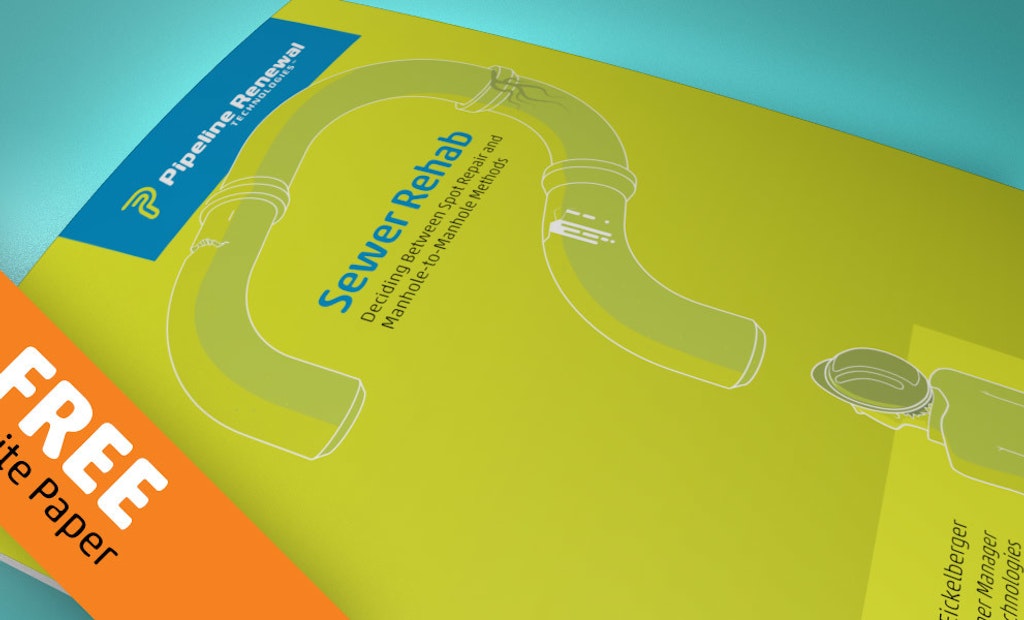Interested in Rehab/Relining?
Get Rehab/Relining articles, news and videos right in your inbox! Sign up now.
Rehab/Relining + Get AlertsSewer rehabilitation is resource intensive. The larger and older a sewer is, the more frequently it requires maintenance, and the more costly and time-consuming that maintenance can be. Many municipalities rely solely on end-to-end (manhole-to-manhole) rehabilitation techniques like CIPP, pipe bursting and slip-lining to repair failing lines. While end-to-end methods can repair common defects in sewer pipe, in certain situations they can be overkill and a waste of time and money. That’s where spot (or point) repairs are more useful. Because of their targeted nature, spot repairs are able to address localized defects less expensively, faster and often with less disruption than end-to-end methods. When a single line has multiple defects, however, the decision between spot and end-to-end methods requires careful consideration.
The white paper Sewer Rehab: Deciding Between Spot Repair and End-to-End discusses these considerations in detail, giving you a framework for making rehab decisions that make the best use of your available resources.
One consideration is type of damage. Not every defect is structural. Sometimes, "gushers" (instances of major infiltration) originate from a single crack, hole or joint, in which case end-to-end relining may not be warranted. Instead, a simple solution like mechanical spot repair can eliminate the infiltration at a fraction of the cost and with far less disruption. And, in the case of a localized structural defect, mechanical point repair can also provide a cost-effective solution.
Contractor preference is another factor that impacts whether spot repair or end-to-end is used. Many contractors advocate for end-to-end repair, even when spot repair would be more effective and affordable, simple because that’s what they’re equipped for and what they’re most comfortable with. In these situations, municipalities can ensure access to both options by specifying each in their contracts.
Click here to download the free whitepaper.





